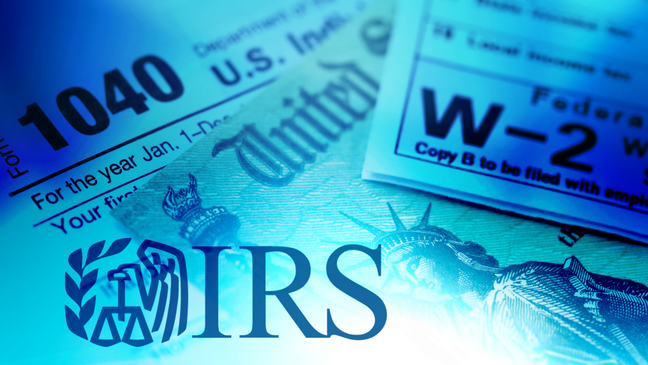Even when aggravated, treat others with respect—especially if it is the Internal Revenue Service (IRS). Those who do not may end up with a special designation with the IRS—a Potentially Dangerous Taxpayer (PDT).

Navigating the intricacies of the tax system can be challenging, and certain terms can leave taxpayers perplexed. One such term is the “Potentially Dangerous Taxpayer.” In this blog post, we aim to demystify this classification, shedding light on what it means and how taxpayers may find themselves labeled as potentially dangerous. By understanding the implications, you can take appropriate steps to ensure compliance and mitigate any risks associated with this status.
What is a “Potentially Dangerous Taxpayer”?
The term “Potentially Dangerous Taxpayer” refers to a classification used by tax authorities to identify individuals or entities who pose a potential risk to the tax system. It indicates that there are concerns regarding the taxpayer’s behavior, compliance, or activities that could potentially lead to tax evasion, fraud, or other illicit practices. This classification signals a need for closer scrutiny and monitoring by tax authorities.
How Does a Taxpayer Receive the “Potentially Dangerous” Status?
Several factors can lead to a taxpayer being classified as potentially dangerous. It’s important to note that the exact criteria and processes may vary across jurisdictions, but here are some common scenarios that could trigger this classification:
- Repeated Non-Compliance: Consistent non-compliance with tax laws, such as failure to file tax returns, underreporting income, or engaging in aggressive tax planning, can raise red flags and result in a potentially dangerous classification. This pattern of non-compliance may indicate a deliberate attempt to evade taxes or engage in fraudulent activities.
- History of Tax Evasion or Fraud: A past record of tax evasion, fraud, or involvement in other financial crimes can contribute to a potentially dangerous classification. Tax authorities closely monitor individuals or entities with a history of non-compliance to prevent recurrence and protect the integrity of the tax system.
- Suspicious Activities or Transactions: Engaging in suspicious financial activities, such as frequent cash transactions, complex offshore transactions, or involvement in money laundering schemes, can draw the attention of tax authorities. These activities may trigger an investigation and potentially lead to a classification as a potentially dangerous taxpayer.
- Information from External Sources: Tax authorities may receive information from external sources, such as whistleblowers, tip-offs, or data obtained through international cooperation agreements. If this information suggests potential tax irregularities or illicit activities, it can prompt a closer examination and potential classification as a potentially dangerous taxpayer.
Implications of the “Potentially Dangerous” Status
Being classified as a potentially dangerous taxpayer can have significant implications. These may include:
- Enhanced Scrutiny: Tax authorities will likely subject the taxpayer to increased monitoring and scrutiny, conducting more frequent audits, reviews, or investigations. This scrutiny aims to ensure compliance, detect any potential tax evasion, and mitigate risks to the tax system.
- Higher Penalties and Interest: If tax authorities uncover non-compliance or fraudulent activities, the penalties and interest imposed on a potentially dangerous taxpayer can be more severe compared to regular taxpayers. The severity of penalties depends on the nature and extent of the non-compliance.
- Reputational and Legal Consequences: The potentially dangerous status can tarnish a taxpayer’s reputation and create legal consequences. Negative publicity, loss of business opportunities, and potential legal actions may arise, further highlighting the importance of prompt resolution and adherence to tax obligations.
Here are some basic points:
Caution Upon Contact: Individuals who have threatened themselves or others within the prior ten years could be designated as CAU, as could any individual considered for the PDT flag but whose behavior falls just short of classification. Importantly, CAU can be attached to those who file or threaten to file frivolous lawsuits (civil or criminal) against an IRS employee, or those associated with them via family or work, in the prior ten years.
Potentially Dangerous Taxpayer: There are more criteria for a PDT designation, all of which involve activity within the prior 10 years. Activities that lead to classification include:
- Physical assault on an IRS employee or those associated with them via family or work
- Intimidation or threat of an IRS employee or those associated with them via family or work, including physical threat, a show of weapons, or behaviors such as stalking and the like
- Membership in a group that advocates violence or threat to the IRS, or individuals who do the same
- Commission of any of these types of acts against contractors or employees of other government agencies
- Demonstration of a propensity for violence
Understanding the meaning and implications of the “Potentially Dangerous Taxpayer” classification is crucial for taxpayers. This classification signifies concerns regarding behavior, compliance, or activities that pose risks to the tax system. By maintaining compliance, fulfilling tax obligations, and seeking professional advice, taxpayers can minimize the chances of being labeled as potentially dangerous and ensure a smooth relationship with tax authorities. Remember, it’s essential to engage in transparent and responsible tax practices, protecting your own interests while upholding the integrity of the tax system.

